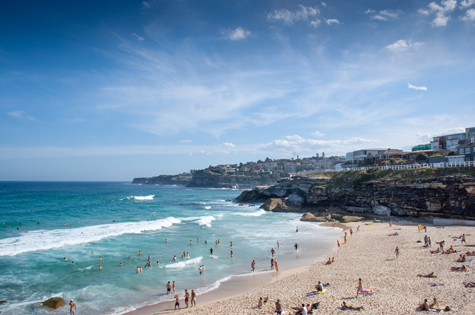Protect Yourself This Summer:The Sun Safety Step You're Missing (It's Not What You Think!)
Date: December 18 2015

Summer has officially arrived and school holidays are creeping up, which means one thing –long days in the sun! While many of us will be stocking up on family size sunscreen bottles and getting the wide-brimmed hats out of the cupboard, what you don’t know is that there is a new step to your sun safety regime.
Sun damage can cause more than just wrinkles – 2 in 3 Australians will be diagnosed with skin cancer by the age of 70. It’s an alarming statistic and as most kids get most of their lifetime sun exposure before 18, it’s an important reminder that you should consider taking precautions to help maintain healthy skin for yours and your family’s future.
Dr Michael Freeman, Principal Dermatologist at The Skin Centre in Queensland, has a step by step guide to family sun safe skin, and some of his tips might surprise you!
The Missing Step
What most people don’t realise is that sun safety for adults starts from the inside. New studies have shown that Nicotinamide (the active form of Vitamin B3) helps to repair DNA damage and support skin immunity. It’s important to ensure you get Nicotinamide and not Niacin, the other form of Vitamin B3, which can potentially cause unpleasant side effects (including nausea and flushing). So if you’re looking to compliment your current sun care regime with Vitamin B3, ask your doctor if adding a Nicotinamide supplement would be beneficial for you.
SPF – The Higher the Safer
A high SPF rating doesn’t mean you don’t have to re-apply two hours later. But it does mean that the sunscreen itself is blocking out a higher percentage of UVB rays. SPF50+ sunscreen filters 98% of UVB radiation – the major cause of sunburn and increased skin cancer risk. SPF50+ still needs to be applied just as liberally and re-applied every two hours (or directly after swimming, exercising and towel drying). People often forget that their face is exposed to the UVA rays for the majority of the day, so every day in summer you should be wearing factor SPF50+ that also has high UVA protection. Although family sized bottles can be a pain to carry around, don’t forget to keep travel friendly bottles in your bag or car just in case.
Less is NOT more
Every four hours in the sun, you should be applying the equivalent of a teaspoon of sunscreen to each limb, and half a teaspoon on your face, no matter how big or small you are. If you’ve start opting for a spray or gel sunscreen, make sure you are applying enough to protect your skin properly as they can be less obvious on your skin during application and generally don’t have as high an SPF.
No Hat No Play
Wear a hat that will protect your face, ears and neck – places where skin cancers are often found. Broad brimmed, bucket and legionnaire hats provide the best sun protection. When choosing a hat for young children, consider the size and comfort, as well as the amount of shade it provides.
ABOUT THE AUTHOR:
Dr Michael Freeman is the principal Dermatologist at The Skin Centre, specialising in Cosmetic and Laser Dermatology. He has more than 30 years’ experience in the medical field. In addition to his position at The Skin Centre, Dr Freeman is the Director of Dermatology at the Gold Coast Hospital, a visiting Dermatologist at the Princess Alexandra Hospital in Brisbane, and is an Associate Professor of Dermatology at Bond University. He is also a member of the Skin and Cancer Foundation of Queensland and an international member of the American Academy of Dermatology.
|
||||||||














__small.png)










